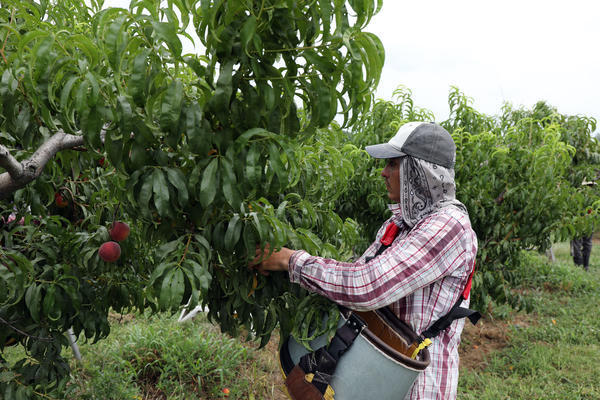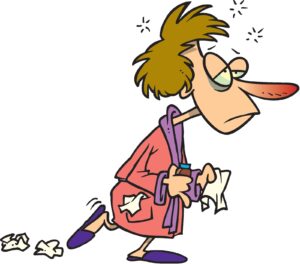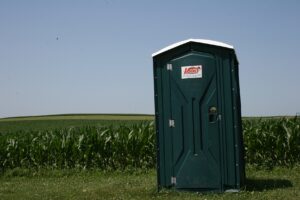7 Health and Hygiene Subject Areas
Training your workers in health and hygiene is one of the top concerns of the Produce Safety Rule. Much of it is common sense, but it is still very important that you take the time to train your workers upon hire and at least once a year thereafter. Below you will find a summary of the 7 areas you will need to focus on when you train your workers.
Keep in mind, the Produce Safety Plan contains all the information you need to not only comply with the Rule and keep the necessary documentation, but it can also be used as a tool to make it easier to train your workers in all the necessary procedures of your food safety plan.
1. Handwashing

Although this may seem simple and common sense, and it is, handwashing is one of the most important, and simple, ways to reduce the spread of bacteria and viruses. But it’s important to train your workers when and how to wash their hands. In the Produce Safety Plan, you’ll find easy to follow, bulleted procedures that can easily be used to train in proper technique.
2. Proper Use of Toilets:
This may seem like common sense as well, but not all people properly use the toilet. It’s important to train your workers to only use the toilet for urination and defecation. It is never acceptable to use the field as a toilet when it comes to food safety on the farm.
Then there’s the question of what to do with used toilet paper. Again, this seems like common sense, but your workers still need to be trained to always dispose of used toilet paper in the toilet only, and never in the trash or on the floor.
And finally, proper hand washing technique must be used after using the toilet. Common sense, but still must be a part of the training.
3. Worker Clothing:

It’s important to explain to your workers what proper clothing should be worn and that it should be clean upon entering the farm and handling produce. Of course, it’s a farm, so of course there is dirt etc, but the clothing should be clean upon arrival for work. This should include shoes as well.
Gloves are not required in the Produce Safety Rule, but if worn, there needs to be a policy in place for your workers to follow. In our Produce Safety Plan, there is a protocol to fill out for each section that allows each farm to ‘personalize’ the plan to their specific farm. The glove policy is one example.
One more thing about clothing…any hand jewelry that cannot be cleaned and sanitized before handling produce must be removed.
4. Worker Injury:
With so much that happens on a farm, injuries can be a common occurrence. But there are procedures that must be set and taught to your workers when those injuries occur. A first aid kit must be available, monitored and clearly written down where it is located and how often it is checked. The Produce Safety Plan has easy to use protocols to make this record keeping simple.
Other procedures that must be recorded and workers trained in are: prompt treatment of cuts, abrasions and other injuries; discarding of contaminated produce; cleaning and sanitizing anything that comes in contact with blood or other fluid; reporting to supervisor of any injury and recording the injury properly in a record designated for that purpose. We’ve included all the records you need in the Produce Safety Plan.
5. Worker Illness:

A sick worker is not only miserable, but can also contaminate fresh produce. It’s important to train your workers that when sick, they will be restricted from directly handle fresh produce. Any illness must be reported to the supervisor and that worker should be reassigned to another part of the farm that does not handle produce. And again, this needs to be recorded in a record keep specifically for this purpose. This is easily done when using the Produce Safety Plan.
6. Drinking Water & Break Area:
It is extremely important that all workers and employees are provided potable drinking water. And the water needs to be readily accessible and the location written down in your protocol. There are rules on what kind of cups to use (single-use) and workers’ personal cups must be plastic and refilled at the water station. All this needs to be written in your procedures and protocols. These procedures should also be part of your worker training. Again, the Produce Safety Plan includes all these procedures already, so you don’t have to write your own.
Workers should also be given a designated break area. Be sure to include where in your farms Worker Hygiene Protocol and whether you allow smoking in the area.
7. Toilet & Handwashing Facilities:

There are definite rules related to providing sufficient number of toilets and sinks to meet worker and visitors’ needs. This should all be written down in your protocol and procedures along with the regular schedule for cleaning and restocking the toilet facilities. There is required record keeping related to the facilities that must be maintained along with written protocols on where supplies are, frequency of cleaning and location of facilities.
These protocols can be used as a tool for training your workers in proper cleaning and maintenance of the toilet and handwashing facilities. Using the Produce Safety Plan will make recordkeeping and training much easier.
Worker health and hygiene is one of the most important aspects of the Produce Safety Rule. And taking the time to properly train your workers in these 7 areas of health and hygiene is extremely important and also a requirement of the Rule. But it can be simple when you use common sense and easy to follow procedures, like the Produce Safety Plan.
It can seem like a lot to do, but most of it is common sense and all of them are included in the Farm Safe USA Produce Safety Plan. Our goal is to make it easy for small and medium farmers to comply with the rule and train your workers in a simple and efficient way.
Food safety on the farm is important and our Produce Safety Plan makes it easier.
If you have questions or comments, please contact us directly or leave a comment below.
Happy farming,
Eric and Kathleen
